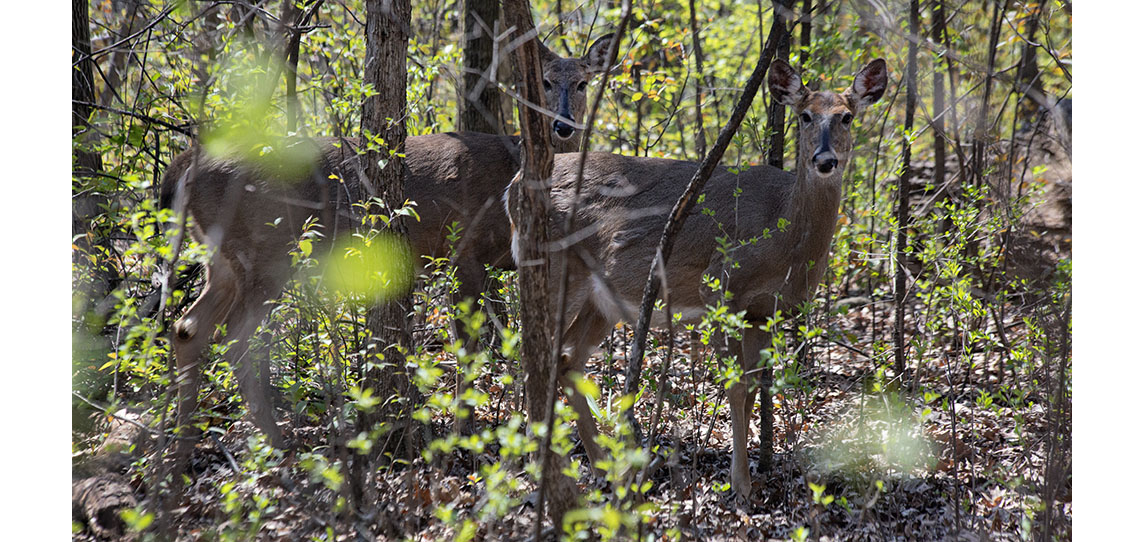
Close Encounters in a Suburban Enclave or Why Neighborhood Parks Matter
May 9, 2023 | Topics: Places, Stories
By Eddee Daniel
Bright spring sunshine splashes into the woodland through still-opening buds, creating a tapestry of colored light amid freshly unfurling foliage. I’ve come to the woods to celebrate a glorious day after what seems like weeks and weeks of disappointingly cold, wet weather. (I don’t mind the rain; it’s the dreariness that lingering cold brings with it.) But not today! I need a fix of nature to boost my morale.

Do you get a craving now and then for nature, like I do? Where do you go for your “nature fix?”1 Yesterday I went on a two-hour hike at Lapham Peak, which has a well-deserved reputation as one of the premier parks in Southeastern Wisconsin. But, lovely as it was, this story isn’t about that experience. Today I spent an hour in a woodland where you can walk from one end to the other in five minutes. Sometimes that’s all I need. Come, take a walk with me. Maybe you’ll be as surprised as I was.
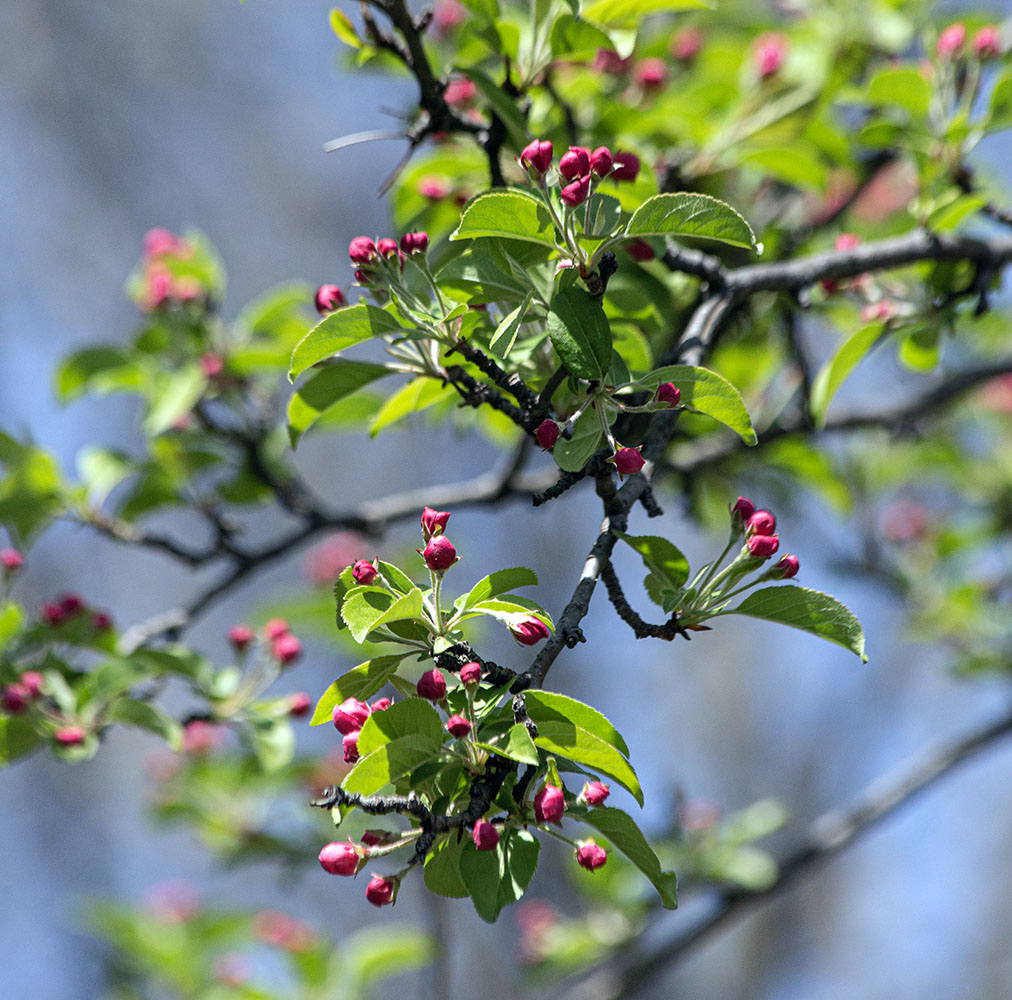
No one expects visitors from out of town to a neighborhood park like Biwer in New Berlin. There’s no need for a parking lot to accommodate them. I pull into a small semicircle of asphalt large enough for two cars in front of the park sign. I get out of my car just as a woman with a large, shaggy caramel-colored dog walks out of the woods. She whispers conspiratorially to me to watch for a deer she saw not far down the path. This news is just the first surprise. I had not expected to encounter any wildlife larger than a squirrel or songbird in a nine-acre neighborhood park.
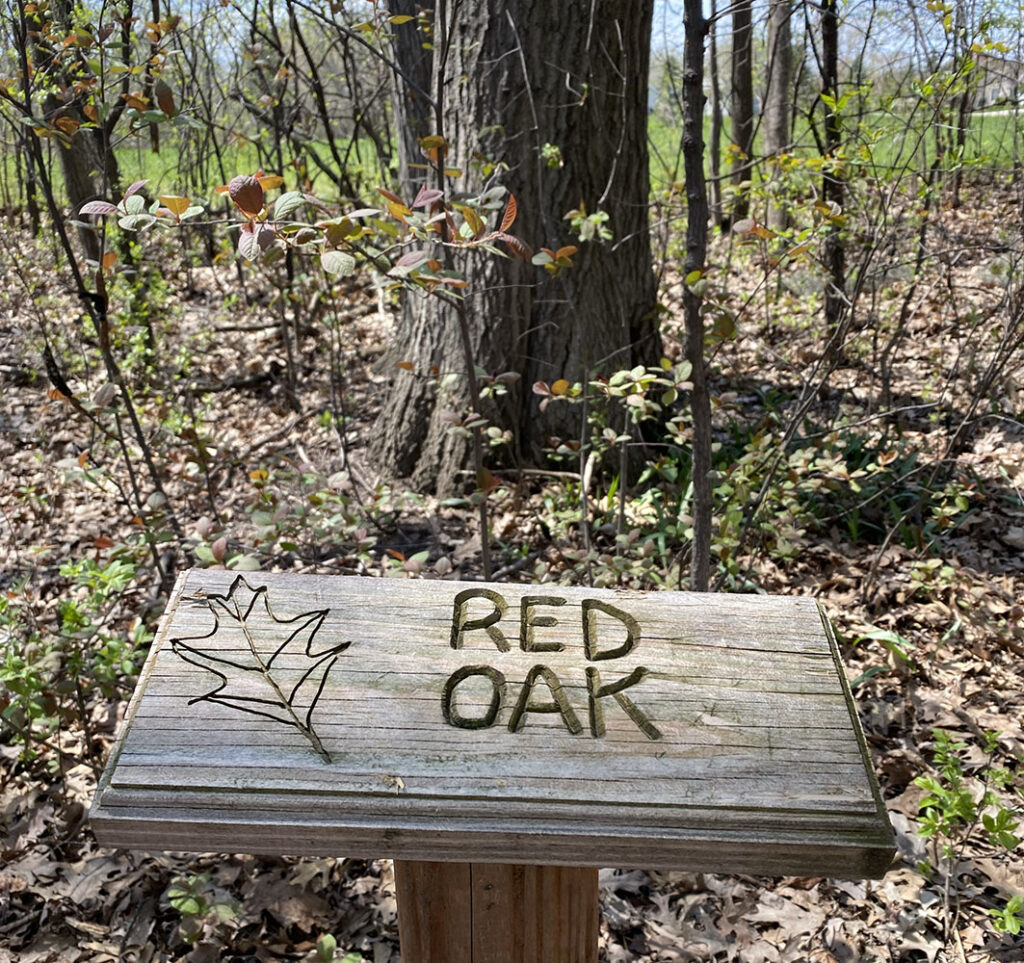
I head cautiously down the wide, heavily mulched path into a narrow woodland between the street and a playing field, watching for the promised deer. I hadn’t gone more than a couple dozen feet when I see one, not in the strip of woods but out in the open, near the far edge of the field. I backtrack to the beginning and take the spur leading to the field. In the few seconds it takes me to get there the deer has begun to stroll slowly across the field towards the woods. Not wanting to spook it, I stay near the edge at first, whipping off a few shots of it with the neighboring houses in the background.
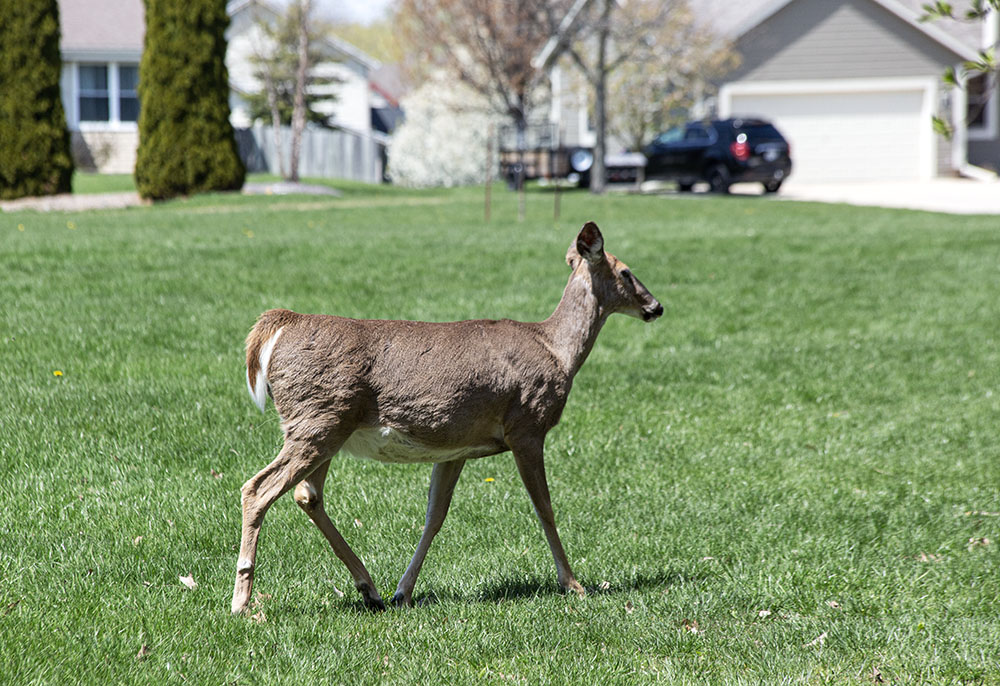
As it nears the woods I venture slowly out into the field in order to get a shot with trees in the background. The large animal saunters nonchalantly along the tree line, nibbling at leaves I imagine must taste especially sweet, fresh as they are. I get surprisingly close before it slips silently away into the brush. When I peer in through the foliage, however, I see not only the white tail receding from view, but another pair of eyes nearby staring back at me. Increasingly intrigued, I scan the dappled scenery and discover a third deer. None of the three are more than thirty feet away.

My movements along the grass don’t bother them. But when I take one step across the grassy verge, the crunch of dead leaves underfoot sends them trotting deeper into the woods. I’ll see them again; I have no doubt. Almost half of the park is taken up by the playing field, a basketball court, a sand volleyball court, and a tot lot. Where can three large deer hide in a five-acre woodland? Especially one as surprisingly devoid of underbrush as this one.
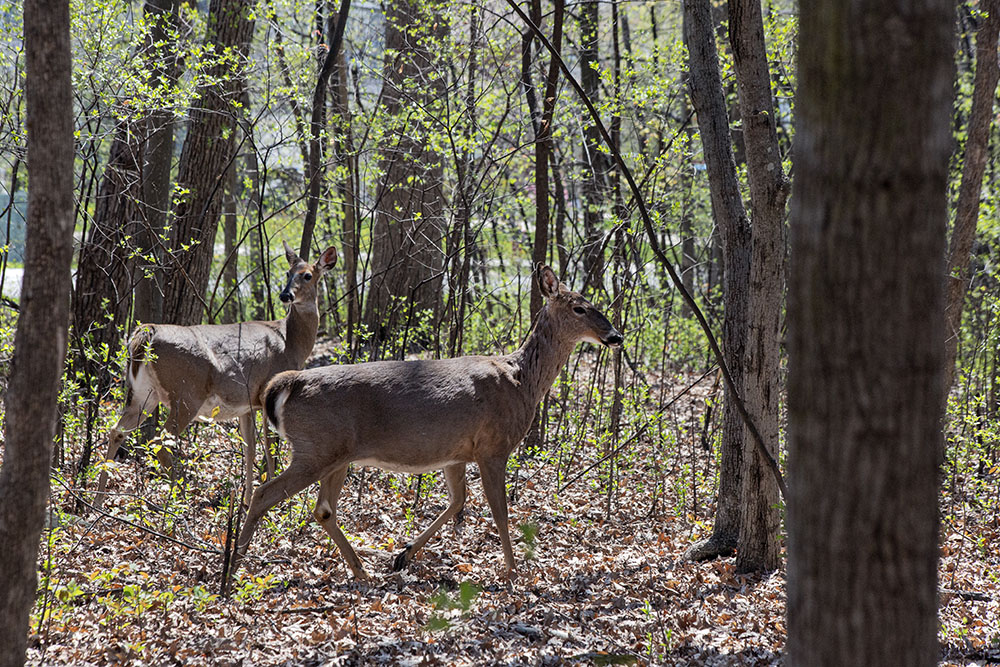
Before you accuse me of romanticizing them I must confess that white-tailed deer are not my favorite wild animals. I guess you’d say I’m ambivalent. I do enjoy situations like this when I can get a few photos that help to represent what a particular park has to offer. However, the ones that eat my tulips and rub the bark off the aspens in my yard I consider enormous pests. We once woke up early to find a whole herd—seven huge deer—hunkered down amongst the pachysandra under our maple tree out front. I have little doubt that some of the neighbors around Biwer Park feel similarly affronted. And yet, I have to admit to feeling a thrill that’s hard to articulate when I am in such close proximity to these stately creatures. As accustomed to humans as they must be to allow me to get so close, they remain indubitably wild.

It may be hard to imagine now because they are so ubiquitous but white-tailed deer once were a threatened species, early in the Twentieth Century. But, for a variety of reasons including a remarkable ability to adapt to human environments and a determined effort to extirpate large predators, they have more than made a comeback from that brink. They are now estimated to exist in greater numbers even than in pre-colonial times. But, putting on my explorer cap, I make my way along the path to see the rest of the woodland. It doesn’t take long to reach a T in the path. I look down the intersecting path and see daylight at the west end. So I turn east. The mulch gives way to mud where the path traverses small wetlands, but I slog on through.


Within a minute or two I see the street ahead. Off to my right though, I spy through the trees what appears to be an unusually large stick fort. Being fond of these constructions (as long as they respect their surroundings), I find my way towards it. The structure is more than large; it sprawls in three directions. Someone clearly enjoys spending time out here in the woods—in my mind they are young adventurers on an imaginary quest holing themselves up against the rigors of the wilderness. Right now, however, one of my erstwhile deer is standing at what looks like an entrance to the fort.
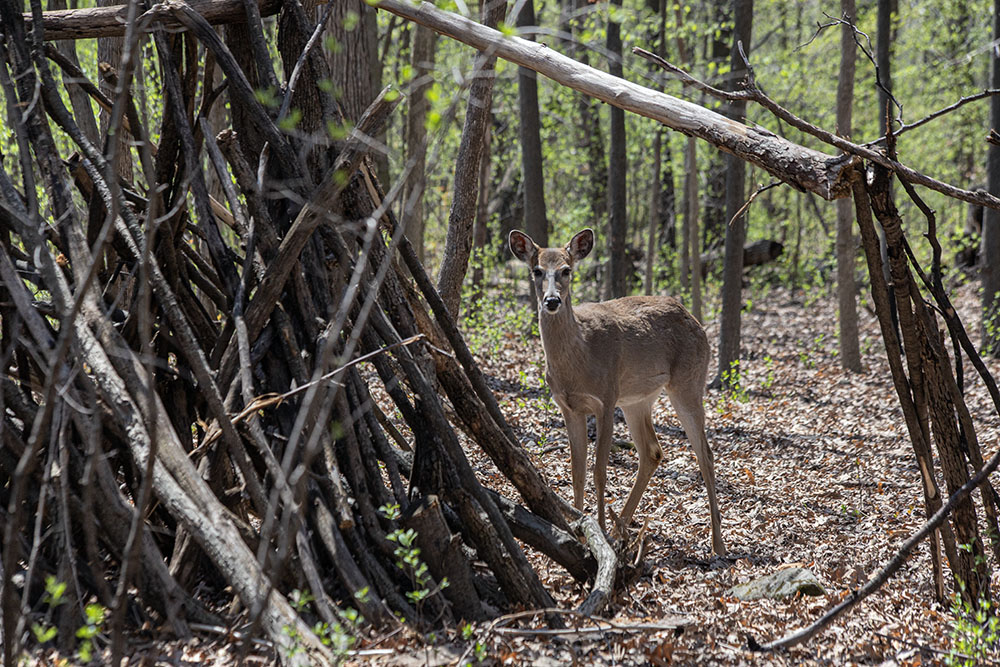
Once again, I ease forward, trying not to crunch the ground cover. I get closer, concentrating on getting a good shot. Then comes the biggest shock of the day! Having satisfied my photographic desires on the obvious deer, I look more closely at the stick fort itself. That’s when I notice the eyes of one of the other deer peering out at me from inside the fort! I have seen many forts in the woods. (I even have made a photographic book out of them.) And I have seen innumerable deer. But I have never even imagined that a deer would go into a human-made fort like this.

I get within ten feet of the fort before the deer bolts out of it. Then another shock: the third deer is also inside the fort! I guess I’ve discovered the surprising answer to the question of where three large white-tailed deer can hide in a five-acre woods!
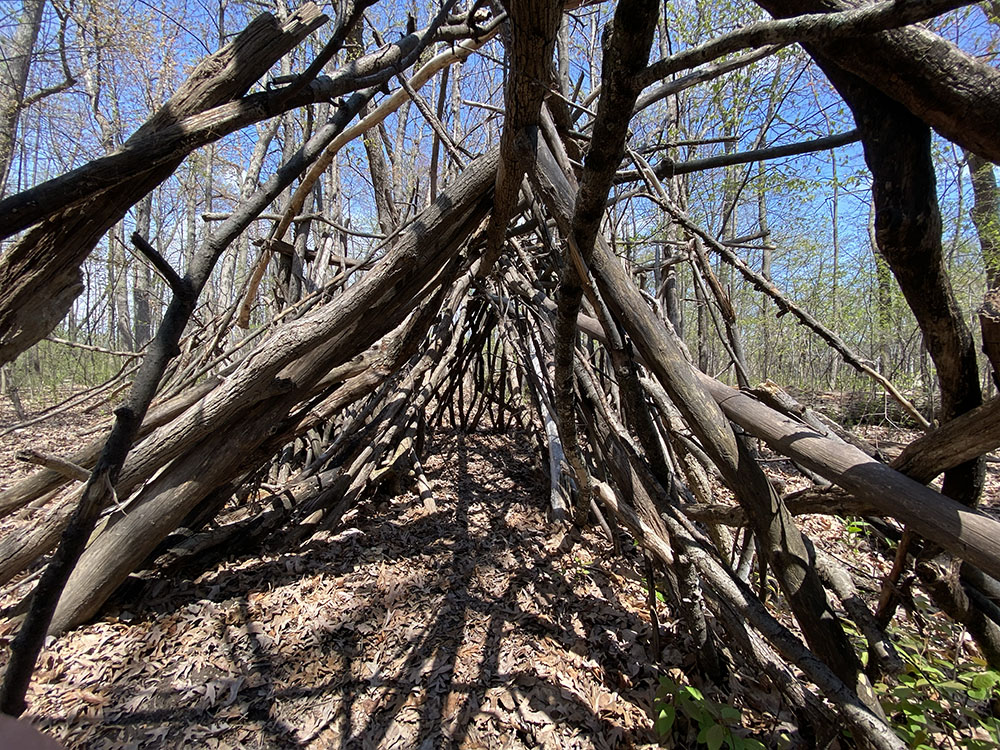
There is more to that story, of course. In the period following World War II, white-tailed deer were in the vanguard of “a new wave of wildlife flowing into urban areas”2 that had long been devoid of wildlife. Since then the populations of many species of animals that have adapted to life in proximity to humans have exploded. The suburbs, like here in New Berlin, with their open spaces and leafy connections have proved particularly attractive to many, who move easily from place to place (mostly under the cover of darkness).
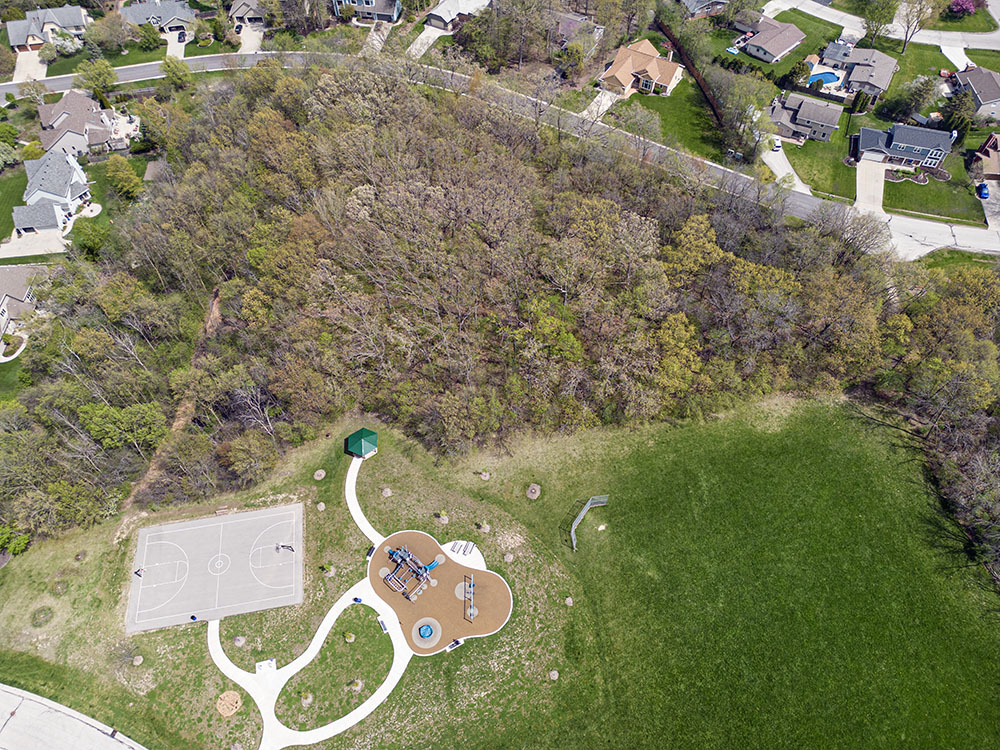
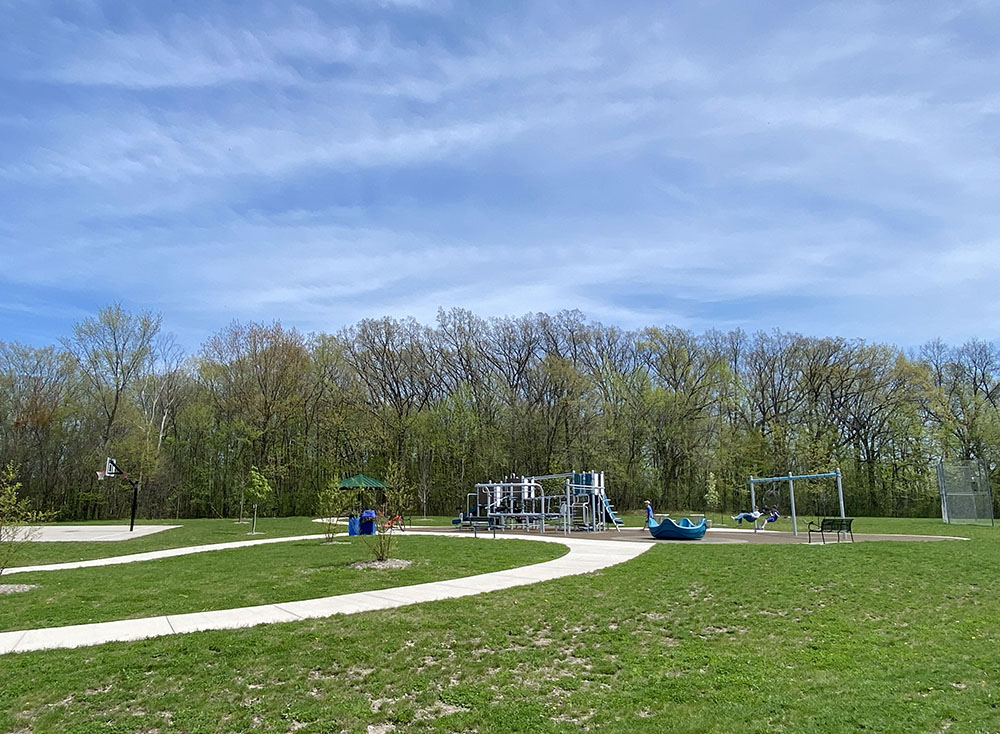
To its credit, New Berlin has a host of small neighborhood parks that serve (inadvertently perhaps) as a network for the movement and preservation of wildlife—along with their primary function as places of recreation for the human residents in their neighborhoods. When I’ve decided that Biwer Park has provide enough natural thrills, I drive a few minutes north to another small park, billed on the map as Fountain Square Nature Area. Although not much larger than Biwer, its ten acres are left entirely to nature.
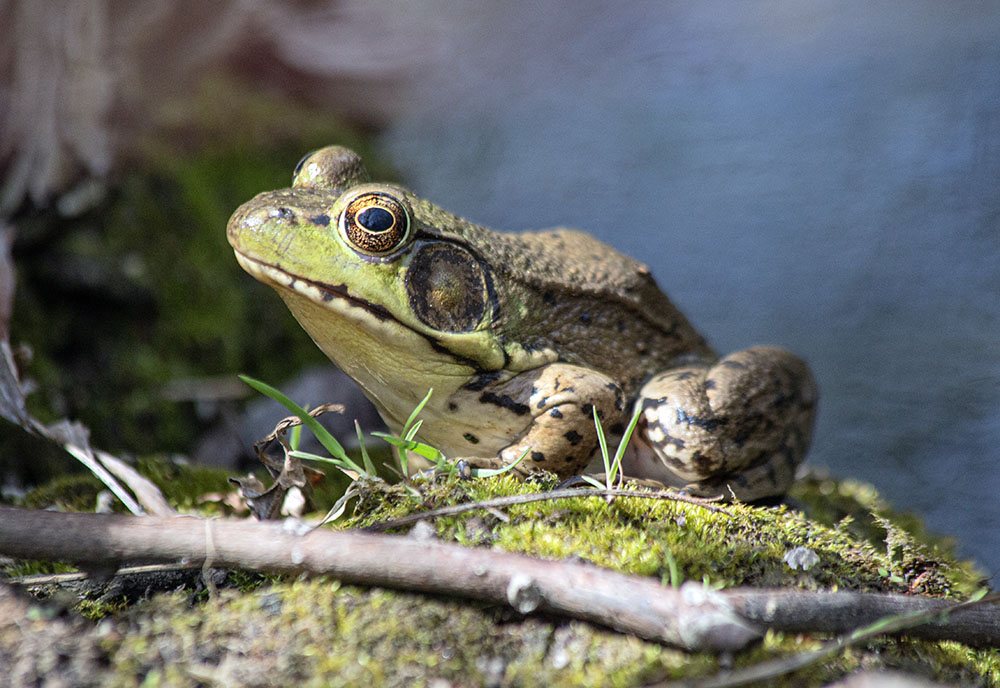
When I get there, in fact, I discover a completely undeveloped woodland. There isn’t even an identifying sign. It takes a discerning eye to make out a rudimentary trail leading into and through the woods—just a narrow and elusive flattening of the leaf litter. Clearly neither as well maintained nor as well used as Biwer Park. I don’t see any deer this time, but their hoof prints are unmistakable in the muddier sections of the trail. And then, somewhere deep in the heart of the woods, I come upon further evidence. Casting away any residual romanticism, I witness the cycle of life, relishing the discovery of a skeletal spinal column among the dead leaves. This surely must be the final resting place of a deer. Hiding is one thing; where do deer go to die? A ten-acre woodland will do, it seems.
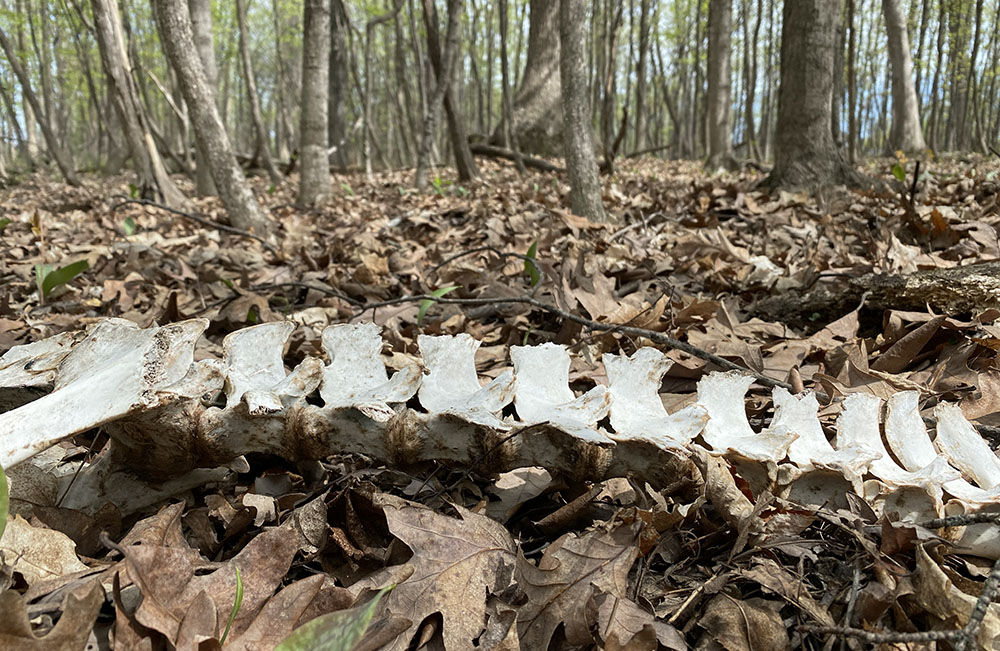
The cycle of life turns again, new life appearing in the form of a bullfrog. This one poses for me, patient but alert, on the edge of a small creek, which flows away from the outfall pipe that releases water from a large pond with a fountain. Presumably that is what gives the adjacent Fountain Square apartment complex its name—and by association this “nature area” (which is in fact publicly, not privately owned, according to SEWRPC3). This park and Biwer have one thing in common, I notice, as I come across not one but two stick forts in different parts of the woods. No evidence of recent occupation is visible, human or otherwise. Maybe as the weather continues to warm the fort-builders will return.
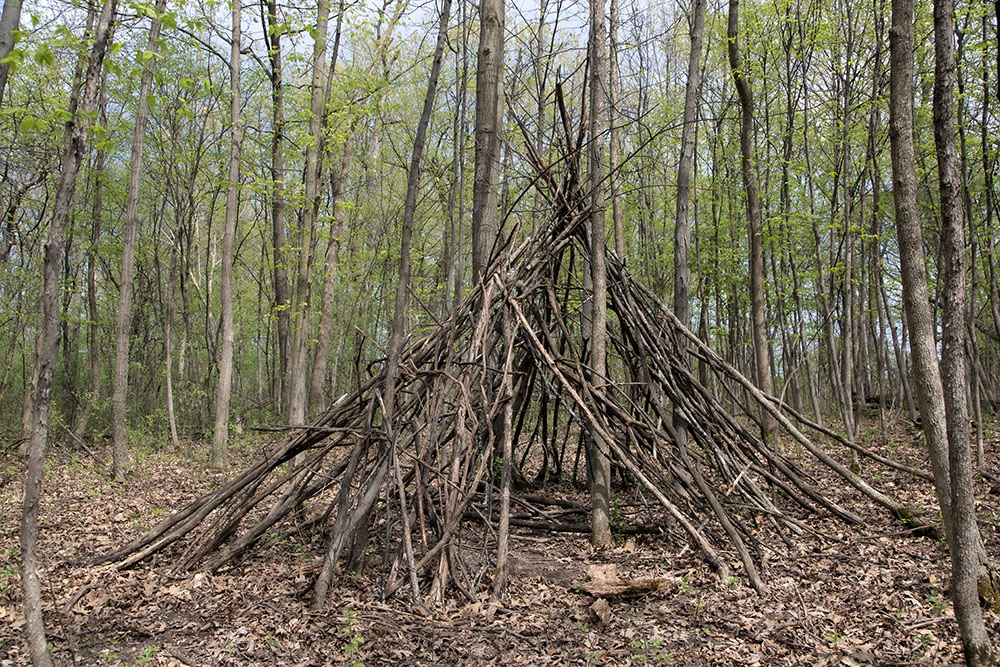
Wildlife isn’t as fickle as we humans. As I see it, there can’t be too many neighborhood parks. It’s especially important for them to include natural areas, no matter how small. Plants and animals can live in them year-round while the human beings come and go. Which is more important, conserving local habitats for the preservation of wildlife or preserving wildlife so that people who visit can encounter them? Two sides of one coin, in my opinion.
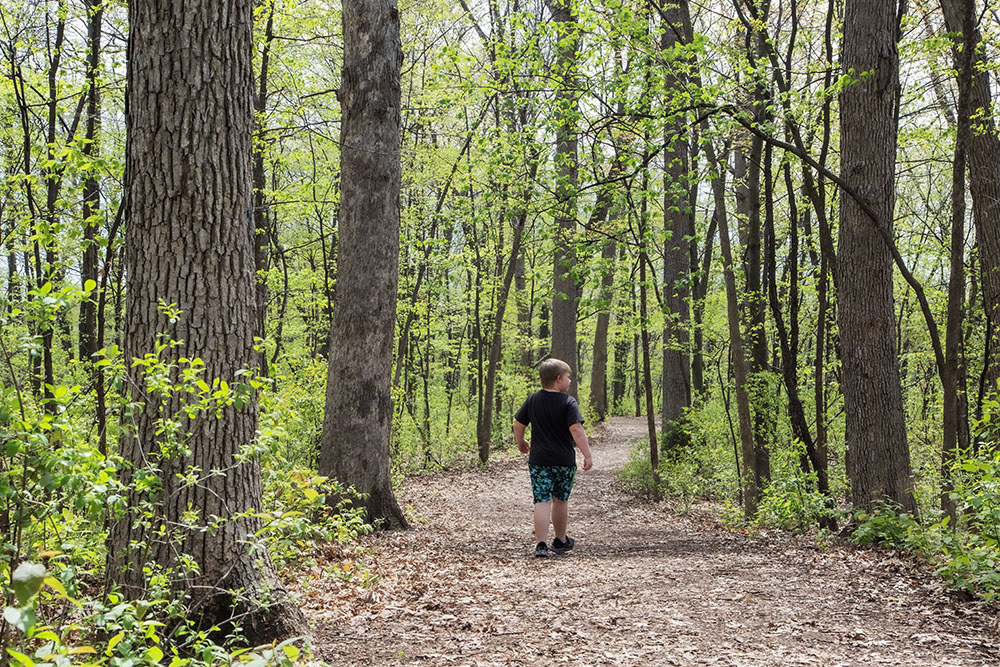
Next time you need a nature fix you can always pack the car and head out to Lapham Peak or any of the myriad other beautiful examples of the wealth of nature in Southeast Wisconsin. (We have a map to help with that.) But the local park may just fit the bill. Who knows, you may run into a family of foxes, owls or other woodland creatures enjoying the park as if it was made just for them.
Notes:
1. The Nature Fix: Why nature makes us happier, healthier, and more creative By Florence Williams.
2. The Accidental Ecosystem: People and Wildlife in American Cities by Peter S. Alagona, p. 44.
3. Southeast Wisconsin Regional Planning Commission, Park and Open Space Plan for the City of New Berlin.
Eddee Daniel, a board member of Preserve Our Parks, feels very fortunate to live a one-minute walk away from his neighborhood park (Hoyt), which has extensive natural areas along the Menomonee River.
7 thoughts on "Close Encounters in a Suburban Enclave or Why Neighborhood Parks Matter"
Comments are closed.


Thank goodness parks have been set aside for everyone’s enjoyment–including all the critters!
Great work… love the stories and beautiful pictures!
Great article Eddee!
It was easy to see these two parklands through your eyes, your descriptions, and I’m so grateful to walk along with you. I’m relegated to a walker, so I no longer wander the woods of the Caledonia Conservancy as I once did; your stories are wonderful. Thanks!
Thanks Diana! Eddee
Cool encounters, including the turkey (turkeys?) in the background!
Nature abounds.
Thanks Jim! But no turkeys, alas.